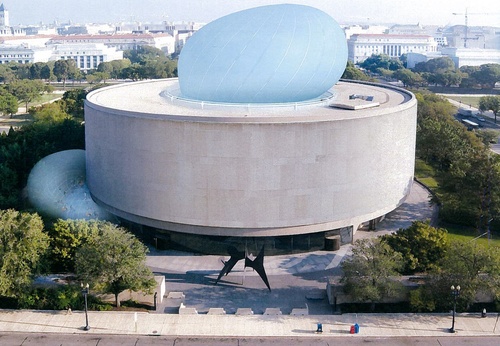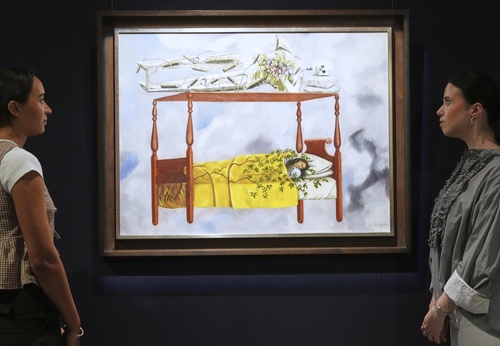
Differences between modern art and contemporary art
Modern art and contemporary art are two distinct periods in art history. Below, we compare their main characteristics.
Modern Art:
Spans from the late 19th century to the mid-20th century, approximately until the 1960s.
It is characterized by artistic movements such as Impressionism, Cubism, Surrealism, and Expressionism. These movements sought to break with established artistic traditions and experiment with new forms of representation.
Modern art was often influenced by social, technological, and political changes of the time, such as industrialization and the two world wars. It spans from the late 19th century to the mid-20th century, approximately until the 1960s.
Contemporary Art:
It began around the 1960s and continues to the present. Contemporary art is diverse and is characterized by the absence of a dominant style or single artistic trend. It can address a wide variety of themes and media, from painting and sculpture to installation, performance, and digital art. It focuses on reflection on contemporary society, globalization, technology, and current cultural issues. It often challenges traditional notions of art and can be conceptual or provocative.
In short, the main difference lies in the time period and stylistic and thematic characteristics. Modern art refers to a specific historical period with defined artistic movements, while contemporary art refers to current artistic production, which is diverse and reflects a variety of influences and approaches.
Source

- November 27, 2025
Gallery of Poster Design by Jorge Mares – Mexico

- November 27, 2025
New Curatorial Discourses in Latin America

- November 27, 2025
Printmaking and its Tradition in Mexico and Chile



- November 27, 2025
Javier Muñoz - Argentina

- November 27, 2025
Cristóbal Herrera-Ulashkevich | Cuban-Born Photographer

- November 26, 2025
Frida Kahlo Breaks World Auction Record

- November 26, 2025
El Dorado | Painting Exhibition by Enriquestuardo Alvarez from Ecuador

- November 27, 2025
New Curatorial Discourses in Latin Amer…

- November 27, 2025
Printmaking and its Tradition in Mexico…

- November 26, 2025
Latin American Abstract Painting: From …

- November 26, 2025
The Influence of Brazilian Neo-Concreti…

- November 25, 2025
Graffiti as a tool for social activism …

- November 25, 2025
Street art en São Paulo, Bogotá y Ciuda…

- November 23, 2025
Contemporary Sculpture in South America

- November 22, 2025
Graffiti as a Tool for Social Activism …

- November 22, 2025
Latin American Urban Artists Who Are Se…

- November 20, 2025
The Evolution of Modernism in Latin Ame…

- November 19, 2025
Colombia: Muralism as a Social Voice an…

- November 19, 2025
Brazil: The Creative Power of Urban Art

- November 18, 2025
Visual Arts: History, Languages, and Cu…

- November 18, 2025
Indigenous Art: Characteristics and Typ…

- November 17, 2025
What are the types of AI?

- November 16, 2025
The Importance of Aesthetic Experience …

- November 16, 2025
Art as a Mirror of Culture: Between Tra…

- November 15, 2025
The Influence of Artificial Intelligenc…

- November 15, 2025
The Evolution of Digital Art in the 21s…

- November 13, 2025
Urban Art in Latin America: A Visual Re…

- August 29, 2023
The history of Bolivian art

- February 19, 2024
Analysis and meaning of Van Gogh's Star…

- January 28, 2024
Culture and Art in Argentina

- September 25, 2023
What is the importance of art in human …

- September 23, 2023
What is paint?

- August 10, 2023
14 questions and answers about the art …

- August 23, 2023
The 11 types of art and their meanings

- September 23, 2023
Painting characteristics

- August 30, 2023
First artistic manifestations

- January 12, 2024
10 most beautiful statues and sculpture…

- September 23, 2023
History of painting

- March 26, 2024
The importance of technology in art1

- March 26, 2024
Cultural identity and its impact on art…

- August 16, 2023
The 15 greatest painters in art history

- April 06, 2024
History of visual arts in Ecuador

- April 02, 2024
History visual arts in Brazil

- October 18, 2023
History of sculpture

- July 13, 2024
The impact of artificial intelligence o…

- August 13, 2023
9 Latino painters and their great contr…

- August 24, 2023
The most famous image of Ernesto "Che" …

- February 19, 2024
Analysis and meaning of Van Gogh's Star…

- August 13, 2023
9 Latino painters and their great contr…

- August 23, 2023
The 11 types of art and their meanings

- August 10, 2023
14 questions and answers about the art …

- August 29, 2023
The history of Bolivian art

- August 27, 2023
15 main works of Van Gogh

- January 28, 2024
Culture and Art in Argentina

- November 06, 2023
5 Latin American artists and their works

- September 23, 2023
Painting characteristics

- September 23, 2023
What is paint?

- September 25, 2023
What is the importance of art in human …

- March 26, 2024
Cultural identity and its impact on art…

- August 30, 2023
First artistic manifestations

- December 18, 2023
10 iconic works by Oscar Niemeyer, geni…

- January 20, 2024
What is the relationship between art an…

- January 12, 2024
10 most beautiful statues and sculpture…

- October 30, 2023
Characteristics of Contemporary Art

- August 24, 2023
The most famous image of Ernesto "Che" …

- August 22, 2023
What are Plastic Arts?

- May 26, 2024


